ATI TV Wonder Digital Cable Tuner: AMD and Dell Bring CableCARD to PCs
by Anand Lal Shimpi on April 3, 2007 11:37 AM EST- Posted in
- GPUs
Completing the Digital Home: Xbox 360 Extender
The idea of keeping your Vista media center PC hooked up to your TV and attempting to make it a dual-use platform is far fetched for many. It appears that the fad of trying to get the PC, as we all know it, into the living room is dying. Microsoft recognized this early on and started down a different path. While the media center interface is perfect for use on a TV, it also works for simply showing content to many people huddled around a single computer screen (although Apple's Front Row interface is arguably a bit better suited for that given its simplicity).
The interface itself is only part of the strength of the media center platform; the ability to store all of that wonderful content is the other major component. So why not use a PC for what it's really good for - storing and accessing data, and simply use "lesser" devices to display that content on TVs and other CE devices throughout the digital home? That's the concept behind digital media extenders, and for Vista/OCUR there is only one such extender that you can stream this content to: an Xbox 360 console.
Shipping the Xbox 360 with built-in media center extender functionality was a brilliant move by Microsoft. Not to say that it took the most intelligence to realize that giving something away for free was a good thing, but it means that today there is an installed base of over 10 million media center extenders across the globe. That number is far greater than any other media center extender that has ever been shipped in the past, and although not everyone will use them in that capacity, if Microsoft can make the entire digital home solution compelling enough a lot of them might.
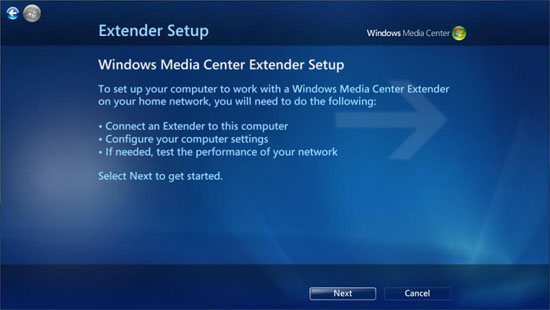
Setting up the Xbox 360 as a media center extender for Vista isn't difficult; the process works much like it does under Windows XP. On the Xbox 360 you select the Media Center option under Media, which will bring up a screen displaying an 8 digit code that you will have to type in on your Media Center PC (you can repeat this process for up to five Xbox 360s).
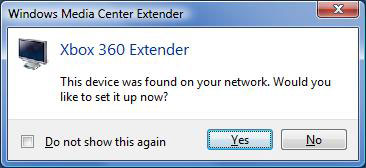
On the PC side, Vista will actually detect that there's an Xbox 360 on the network and ask you if you'd like to configure the extender. If you choose not to you can always manually add an extender under the Tasks menu within the Media Center interface. Configuring the extender simply requires that you input the 8 digit code displayed on the Xbox 360 and click next a couple of times. The entire process just takes a few minutes and you're done. Once the extender has been paired with your Vista PC, you won't have to repeat the process again.
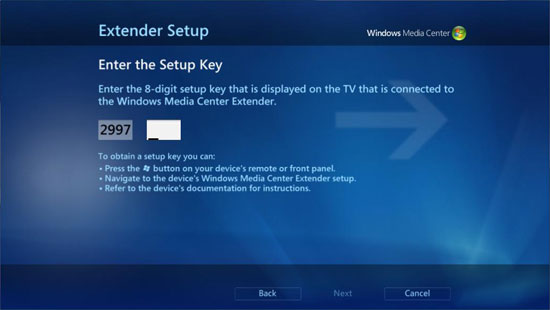
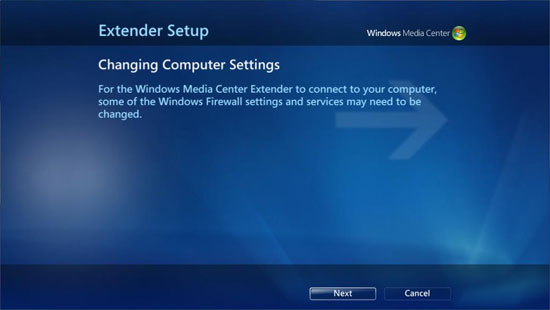
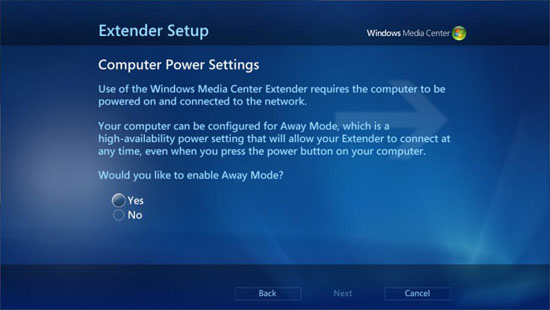

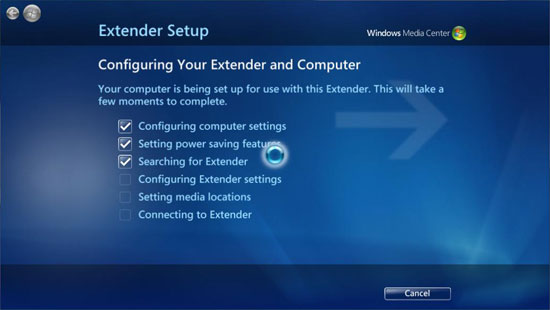
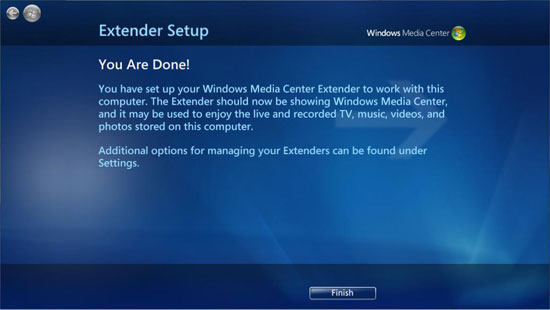
After the Xbox 360 and PC have been paired, you can now watch live TV, recorded shows and view/listen to all of your content on the TV that's connected to your Xbox 360. The interface is actually streamed from the Vista PC, so on the Xbox 360 it looks like a carbon copy of Vista's Media Center UI.
While you can use the Xbox 360's controller to navigate through the UI, with no on-screen explanation of what each button does we found it far more user friendly to use the Xbox 360's remote control. The extended remote that ships with the Xbox 360 HD-DVD drive worked particularly well as it made the experience very TV-like, the only exception being that volume control didn't work so we had to use our television's remote control for adjusting channel volume.
Just like on our Vista PC, selecting live TV from the Media Center UI brings up a live TV stream sent to the Xbox 360 by our PC/OCUR setup. Navigating the guide is almost as fast as it is on the PC, but switching channels is a bit slower. There's a good several second delay between when you hit the channel up button and when the next channel actually appears. Long channel switching delays are of course common whenever you have a DVR in place but streaming to the Xbox 360 lengthens this delay. All decoding is actually handled on the Xbox 360 itself, so from the PC's perspective any additional load is only in the sense of streaming data to the 360.
What is truly necessary is media center extender software for other PCs. While there are 10+ million Xbox 360s in homes today, there are far more second or third PCs and laptops that are out there. Being able to use any of those systems as media center extenders could significantly extend the range and usability of Vista as a DVR and media hub. While we've heard rumors of such a project, it seems that turning the Xbox 360 into a media center extender was a lot easier of a task since it's a closed system with clear content restriction policies. Once you start streaming this content from your OCUR PC setup to other potentially less secure PCs in the house, you compromise the security of the content (again not an end user problem but unfortunately we don't generate the content).










29 Comments
View All Comments
DigitalFreak - Tuesday, April 3, 2007 - link
Uh.. I don't think you understand how these things work. The only inputs on the 650 & AIW are composite and S-video. Neither is going to allow you to record anything in HD from your cable box. The HD support on the 650 is only for OTA.BPB - Tuesday, April 3, 2007 - link
You know, until now I thought the AIW X1900 had YPrPb input. Man, I need to wake up!TheTerl - Tuesday, April 3, 2007 - link
I was amused by the choice in movies. After all, who wouldn't want to check out "Boinking in the Dorm Room" at work? With a title like that, I'm sure it's a cinematic masterpiece.Aside from that, very interesting article.
DigitalFreak - Tuesday, April 3, 2007 - link
Thing is, it may show up in the guide, but you can't actually order it... :0)WileCoyote - Tuesday, April 3, 2007 - link
Only Anand can turn an article I would normally ingore into a fun and interesting read. Good stuff!MercenaryForHire - Tuesday, April 3, 2007 - link
Agreed. While I have nothing but distaste for this hardware, its related metric assload of DRM tie-ins, and lack of DIY support, I enjoyed reading the review of it immensely.pjladyfox - Tuesday, April 3, 2007 - link
"why on earth would you go through this when you can just rent an HD-DVR from us for $9 a month?"I think this pretty much sums up the entire system to begin with. It really does make me wonder if the unholy alliance (read: MPAA/RIAA/Cable/Telco) is making the use of CableCard-based devices more difficult than it needs to be. The number of people that were called on-site just to resolve the multiple issues is a rather telling statement that while the tech may be great it is being set up to fail in the marketplace.
And why was there no provision for HDMI input? I mean, it was designed with HDCP encryption in mind so I would have thought this would have been a no-brainer but if I had to guess I would say the unholy alliance shot that idea down real quick. -_-
DigitalFreak - Tuesday, April 3, 2007 - link
Cable companies are required by the FCC to provide cable cards upon request. However, it's pretty obvious they make it as difficult as possible to get them up and running ($42.95 install fee?).tuteja1986 - Tuesday, April 3, 2007 - link
I hope the person incharge of this project reads this because he needs to get up his lazy ass and start sloving these issue by getting the right dude to slove this problems. Then ATI TV Wonder Digital Cable Tuner + VISTA MCE will succeed or Hollywood could just kill DRM which would make life easier on their loyal customer.